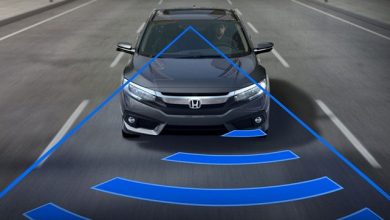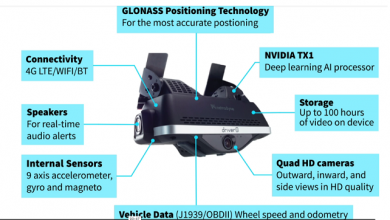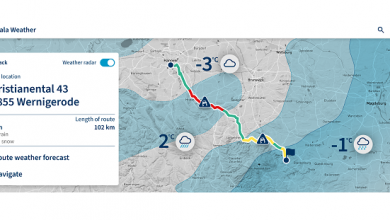Get your car insured with ADAS
ADAS is emerging as the added advantage for drivers which does not only assist them, but also eliminate errors, including blind-spot and lane-departure warning systems, automatic emergency braking, lane-change assistance, drowsiness alerts, and bird’s-eye displays.
Sanjay Gupta
Sr. Director & India Country Manager
NXP Semiconductors

Accidents on roads – Can technology minimise this?
Technology is one of the key enablers of growth in the automotive industry today. Consumers are slowly demanding more technology within their cars to not only enhance their driving experience but also to secure their cars.
Security technology has slowly emerged as a key factor, driving the sales of automotive industry today. According to reports, over 1. 25 million people were killed in road accidents in 2010 alone, which is more than the number of people killed in all our wars put together. This is what has prompted car manufacturers to take security very seriously and with the conversations around driverless cars, security technology has hit the limelight at the right time.
ADAS – Can it bring some relief?
Several companies are investing heavily to develop safety and security technologies which can not only warn drivers on high speed, dangerous roads ahead but also save people inside the car in case of severe accidents. One such technology which has gained prominence over the past few years is Advanced Driver Assistance System. ADAS is developed to assist, complement and eventually substitute the driver in the complex process of controlling a vehicle. Few top features ADAS technology includes adaptive cruise control, blind-spot monitoring, lane-departure warning, night vision, lane-keeping assist and collision warning systems with automatic steering and braking intervention. Predictive ADAS is designed to prevent accidents by taking partial control of the car’s movement. These automated safe systems are paving the way for tomorrow’s fully autonomous car.
While the technology is still at a nascent stage, it definitely has the promise to take the security landscape in the automotive industry to new heights.
ADAS – Is there a demand?
Demand for advanced driver-assistance systems (ADAS) is expected to increase over the next decade, fuelled largely by regulatory and consumer interest in safety applications. For instance, both the European Union and the United States are mandating that all vehicles be equipped with autonomous emergency-braking systems and forward-collision warning systems by 2020. A recent McKinsey survey also suggests that car buyers are becoming even more interested in ADAS applications that promote comfort and economy, such as those that assist with parking or monitoring blind spots.
While the prospect of completely autonomous, driverless cars continues to grab attention and interest across the world, the implementation of security technologies have already started We have already witnessed advanced sensors, cameras, entertainment and other safety features been integrated into the cars. The technology is bringing a change in the way we are operating cars, hence bringing a dynamic shift in our safety and driving experience. ADAS is emerging as the added advantage for drivers which does not only assist them, but also eliminate errors, including blind-spot and lane-departure warning systems, automatic emergency braking, lane-change assistance, drowsiness alerts, and bird’s-eye displays.
Why do you need ADAS?
ADAS is not only necessary to secure your car, but it also makes your car intelligent and more eco friendly. Here are few reasons why you should shell out some extra money to get ADAS inbuilt inside your car:
- Increased connectivity: When the world is getting smarter, why leave out your car? With the help of ADAS technology, your car can be connected on the go
- Greener Mobility: Vehicles can better manage their navigation and consumption, thus reducing emissions for a smaller carbon footprint
- New Mobility: Analysts predict more car sharing and less car ownership and new technology that will enable individual profiles per driver
- Increased Safety: Active and passive safety systems can help to advance the goals of reduced driving risks and zero fatalities
Concept Awareness
ADAS, as a technology has the potential to transform the automotive sector, its current annual revenues—which range from about $5 billion to $8 billion, according to most sources—are modest compared with those for other automotive systems. For instance, 2015 revenues were about $30 billion for audio and telematics and about $60 billion for climate control. Part of the problem is that many of the most promising ADAS applications are still in the R&D phase or have not yet available the market; while some are expensive and mostly available in premium cars.
Consumer awareness remains the biggest concern for ADAS. The growth projection of ADAS though represents immense opportunity for the technology but also tells us that there is a need for more sophisticated consumer awareness efforts to drive the adoption
But the most important factors inhibiting demand may be a lack of consumer awareness. In a recent online survey of more than 4,500 car buyers in five countries conducted by McKinsey, many respondents were unfamiliar with ADAS applications, and few purchased cars with this technology This finding suggests that once consumers become familiar with ADAS, they will prefer cars with these features.
Approach to build awareness
The automotive companies who explain the systems’ features more actively, carefully define and satisfy customer preferences, and price the technology appropriately, on customer value – are likely to be strongly positioned to capture additional economic benefits, drive brand differentiation, and advance toward the deployment of even more autonomous or semi-autonomous vehicles.
There are at least a couple of factors that favor greater ADAS adoption. First, declining prices may provide a tailwind as price becomes an important factor cited for purchase decision. The second factor is the importance of safety to drivers and their increasing awareness of the technologies’ capabilities. Drivers have consistently improved vehicle safety, so the technologies can be—and are—a point of differentiation among carmakers and over time may become a “table stakes” factor, making ADAS a likely critical trend for carmakers to embrace.
The application of ADAS systems can significantly reduce the number of road accidents and severity of injuries. Different sensors provide dynamic features including adaptive cruise control, parking assistance, blind spot detection, lane departure warning, drowsiness monitoring, tyre pressure monitoring and night vision. In the early stage of adoption, these systems were limited to the luxury segment of vehicles.
How the future looks?
However, with technological advancements and rising awareness among customers, some of these systems are now being integrated into the mid-range and economy class vehicles as well. Stringent government regulations in Asia-Pacific countries are leading to higher adoption of ADAS systems. Complexity in testing systems and huge cost incurred for the installation of ADAS systems are restraining the market growth. The deployment of ADAS systems in low-cost cars and increasing electronic integration within vehicles would be the major trends in near future.
Also with technology majors investing heavily on driverless cars, ADAS will hold key to the success of driverless cars. Security is one of the prime concerns and a roadblock to the success of driverless connected cars and ADAS is really one of the bricks to the wall. But certainly, one of the strongest bricks.
Future holds immense potential, key to making it work will be taking the right steps in the right time.





